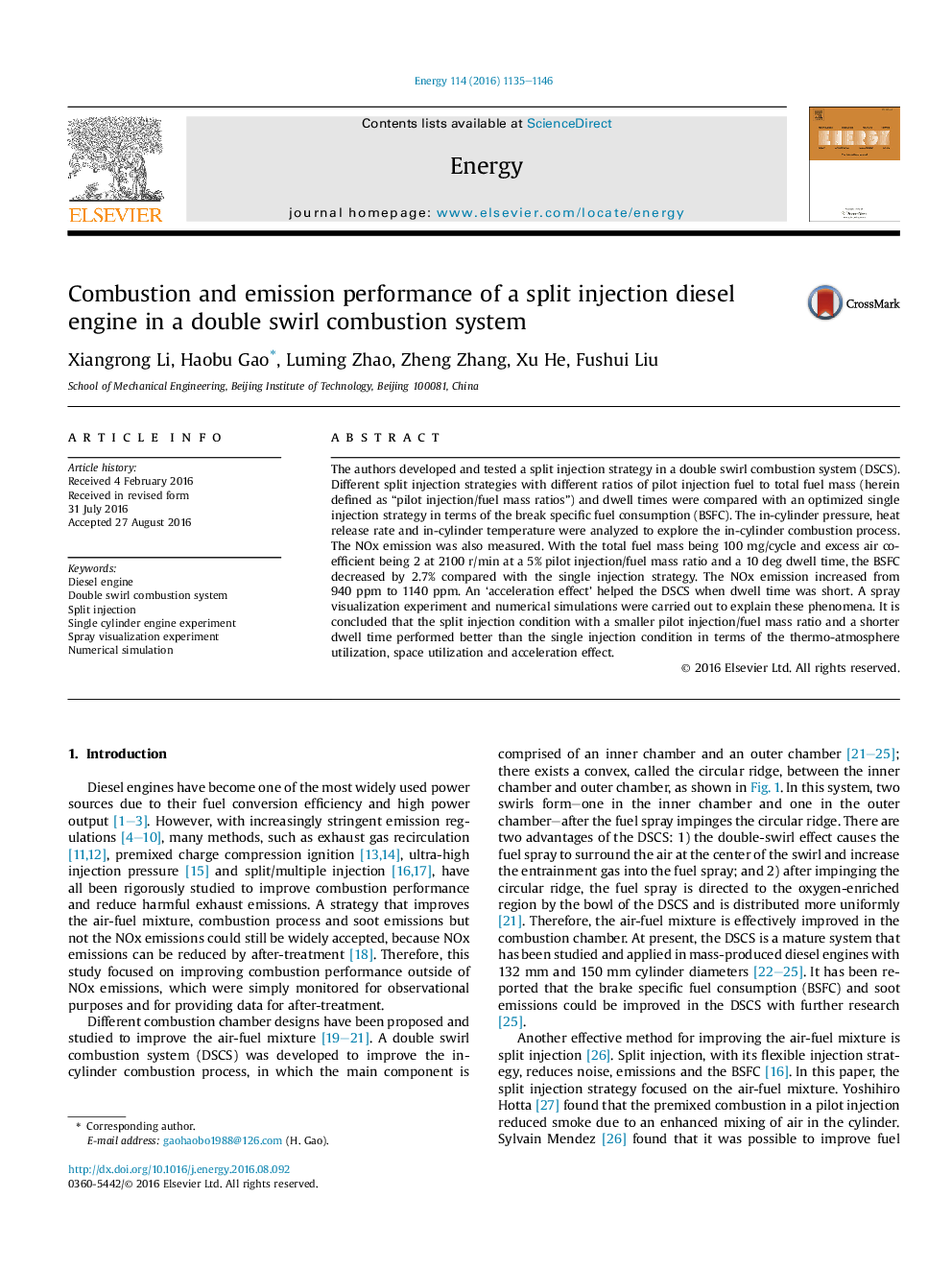| Article ID | Journal | Published Year | Pages | File Type |
|---|---|---|---|---|
| 8072914 | Energy | 2016 | 12 Pages |
Abstract
The authors developed and tested a split injection strategy in a double swirl combustion system (DSCS). Different split injection strategies with different ratios of pilot injection fuel to total fuel mass (herein defined as “pilot injection/fuel mass ratios”) and dwell times were compared with an optimized single injection strategy in terms of the break specific fuel consumption (BSFC). The in-cylinder pressure, heat release rate and in-cylinder temperature were analyzed to explore the in-cylinder combustion process. The NOx emission was also measured. With the total fuel mass being 100 mg/cycle and excess air coefficient being 2Â at 2100 r/min at a 5% pilot injection/fuel mass ratio and a 10Â deg dwell time, the BSFC decreased by 2.7% compared with the single injection strategy. The NOx emission increased from 940Â ppm to 1140Â ppm. An 'acceleration effect' helped the DSCS when dwell time was short. A spray visualization experiment and numerical simulations were carried out to explain these phenomena. It is concluded that the split injection condition with a smaller pilot injection/fuel mass ratio and a shorter dwell time performed better than the single injection condition in terms of the thermo-atmosphere utilization, space utilization and acceleration effect.
Related Topics
Physical Sciences and Engineering
Energy
Energy (General)
Authors
Xiangrong Li, Haobu Gao, Luming Zhao, Zheng Zhang, Xu He, Fushui Liu,
